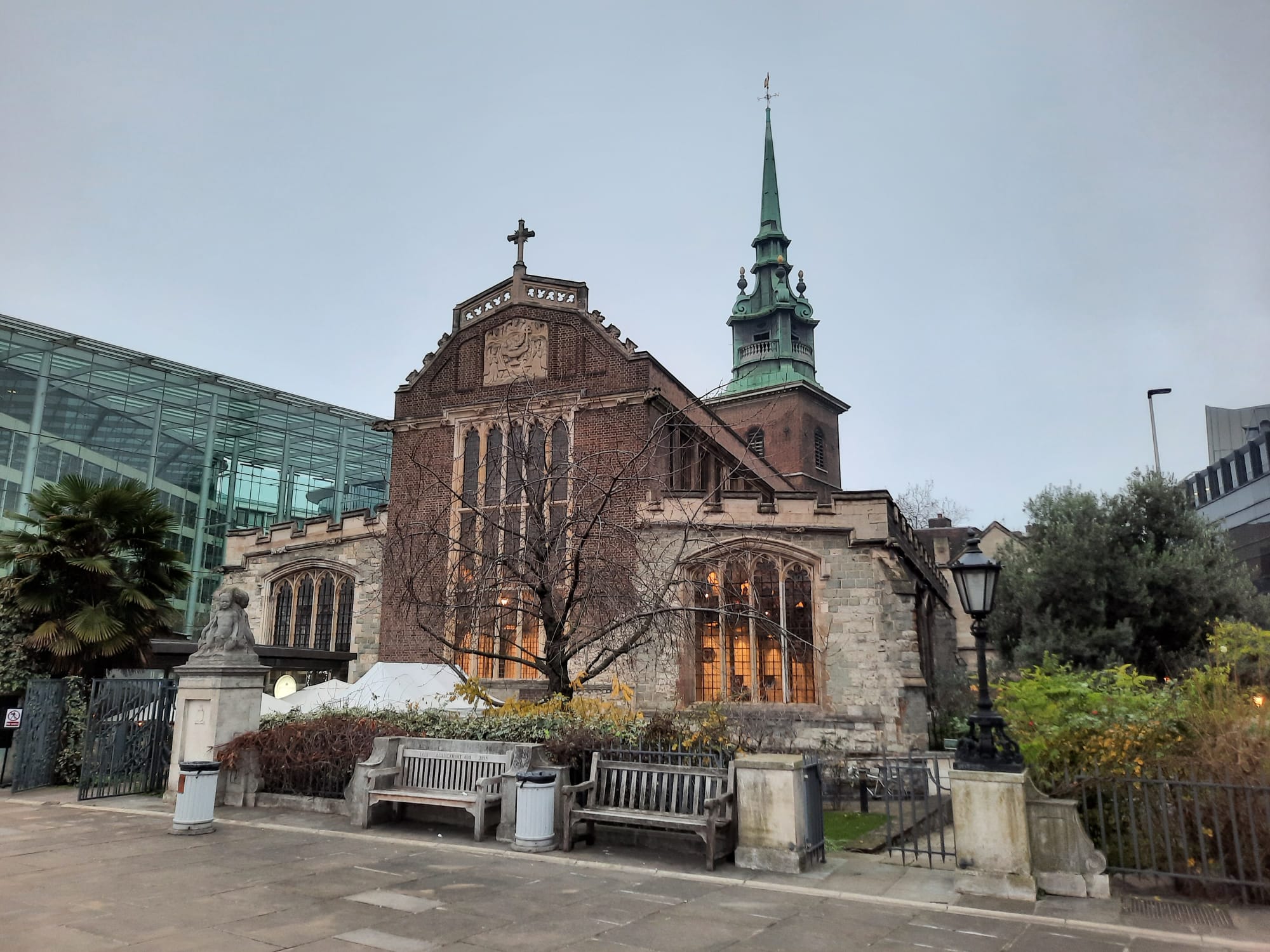All Hallows By The Tower, London
A description of a visit to All Hallows By The Tower, a London church with a long history and a small museum to boot.
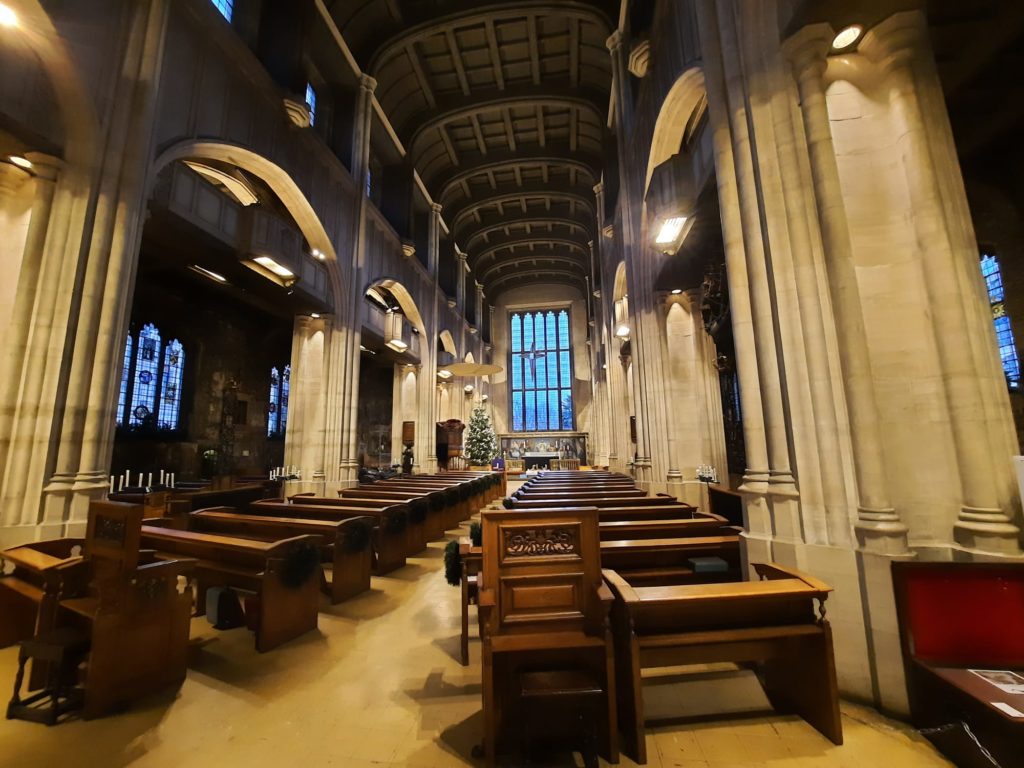
All Hallows By The Tower
I was very pleased recently to be able to stop by All Hallows by the Tower and visit its interior and crypt museum. Most of the time I lived nearby in Wapping, there were pandemic-related restrictions. This church has, however, cropped up a couple of times. We ended a London Wharves and Warehouses walk near here in early 2021, and also saw it when we explored Roman Londinium.
The church of All Hallows by the Tower has a long history. In fact, nobody’s quite sure how old. Some believe that it dates back to 675, around about the time of the founding of the Anglo-Saxon Barking Abbey. There is little evidence for this, however. In the Domesday Book (1086) Barking Abbey is noted as having 28 houses and half a church in London – the latter is often associated with All Hallows. The church was damaged in a gunpowder explosion in 1650, so was shiny and new just in time for the Great Fire of London. It survived, thanks to William Penn’s father, an Admiral at a nearby naval yard, who had his men pull adjacent buildings down as a firebreak. Samuel Pepys watched the blaze’s progress from the tower of All Hallows.
Rather than the Great Fire, it was the Blitz which caused serious destruction to the church. It was gutted by German bombers, rebuilt after the war, and reconsecrated in 1957. Many portions of the old church survived however, including a Saxon arch and some charming carvings. It’s a lovely old City of London church to visit today, but I would be lying if I didn’t say it was mainly the crypt museum with Roman floor which drew me here on a wintery afternoon.
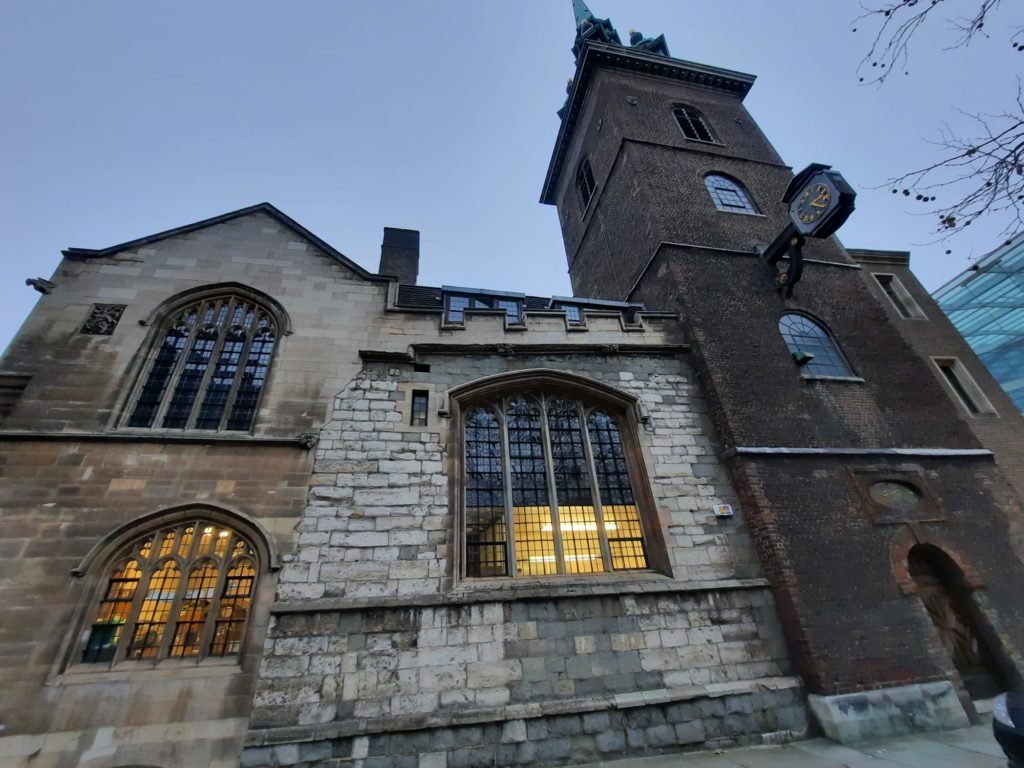
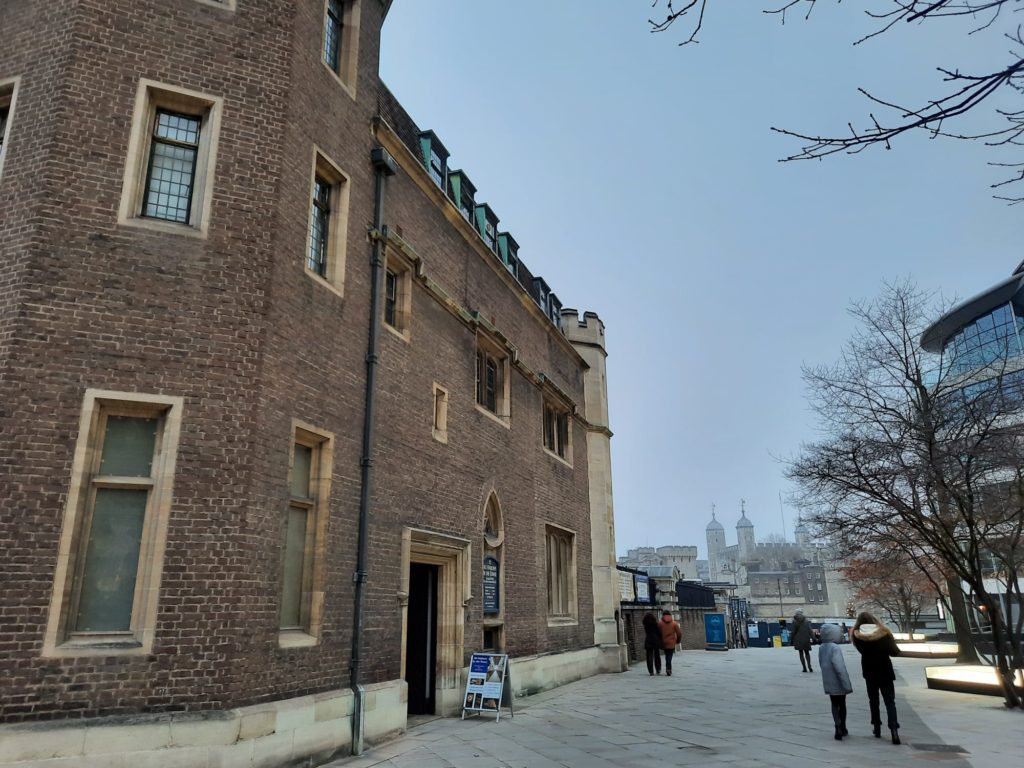


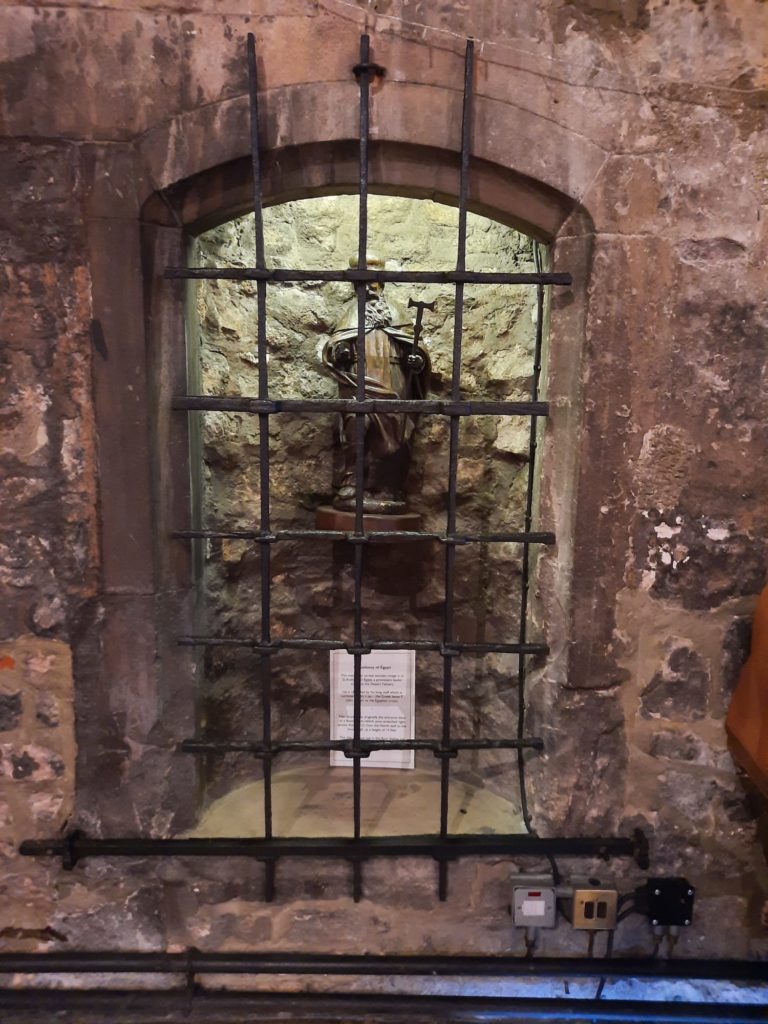
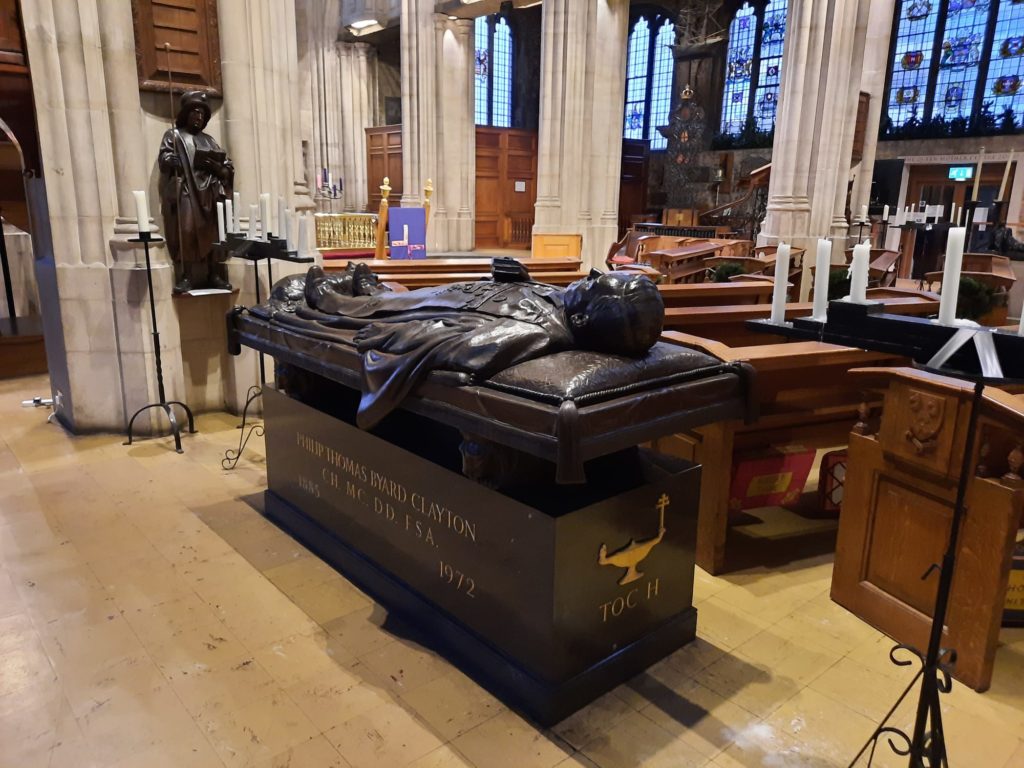
The Church
Before we go down to the museum, however, let’s take our time to look at the church. Looking around it now, you wouldn’t know it’s mostly a 1940s-50s rebuild, would you? But there’s a photo here which shows just how bad it was. And in one or two locations you can see melted lead or a burned door as reminders. But otherwise there are great historic things to see. The Saxon arch I mentioned before. A font cover by Grinling Gibbons. One or two nice old carvings of saints. Plenty for the historically inclined.
I enjoyed a couple of elements specific to All Hallows, as well. Firstly there is a Mariners’ Chapel. It was closed when I visited, but demonstrates the links to the nearby Port of London Authority and the many, many sailors who have passed through London over the centuries.
In the bottom image above, you can also see an effigy of Philip “Tubby” Clayton. Australian-born (1885) with British parents, Clayton lived in England from the age of two. He was an army chaplain in WWI and, with another chaplain, opened a rest house in Belgium: Talbot House, or Toc H. After returning to London, Clayton was the vicar of All Hallows by the Tower. He also (with others) continued Toc H as a Christian movement based on friendship, service and fair-mindedness. This, as well as his service to impoverished local communities in Tower Hamlets, is a strong legacy. I first learned about Tubby Clayton on an earlier London walk, but appreciated learning more here.
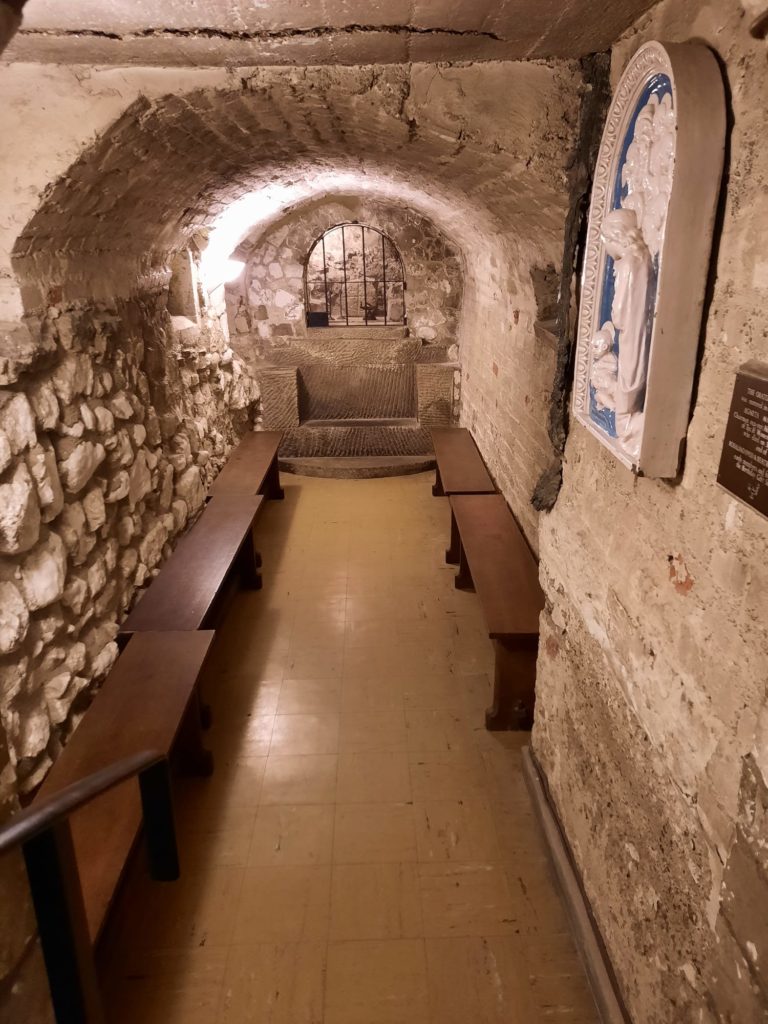
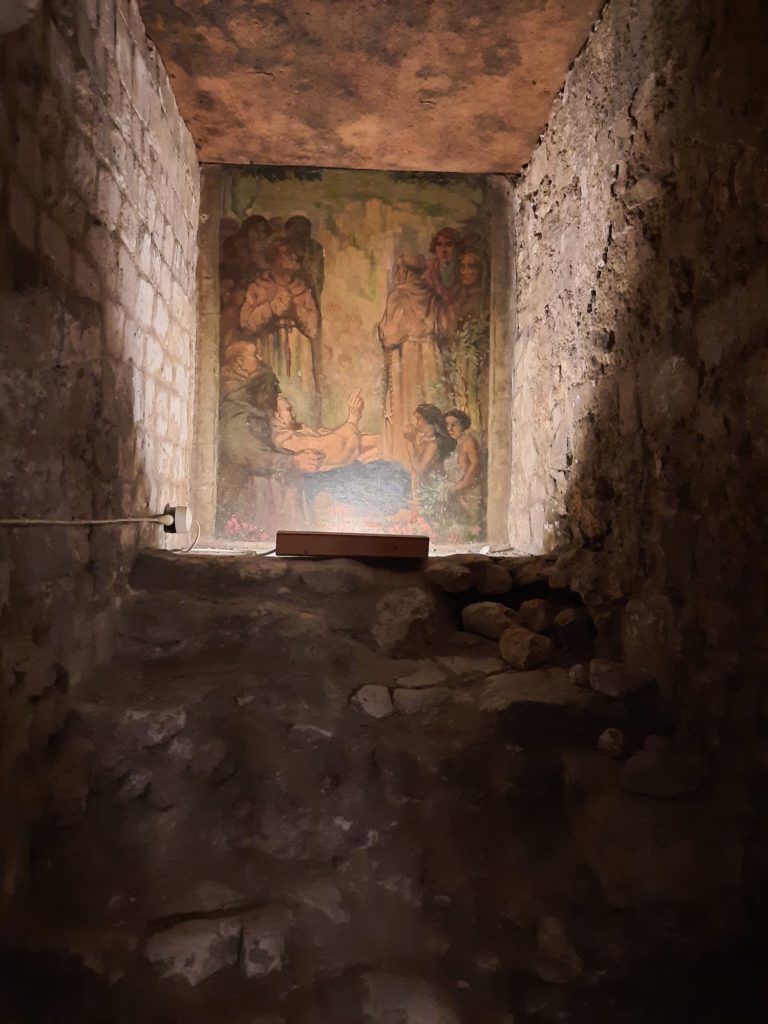
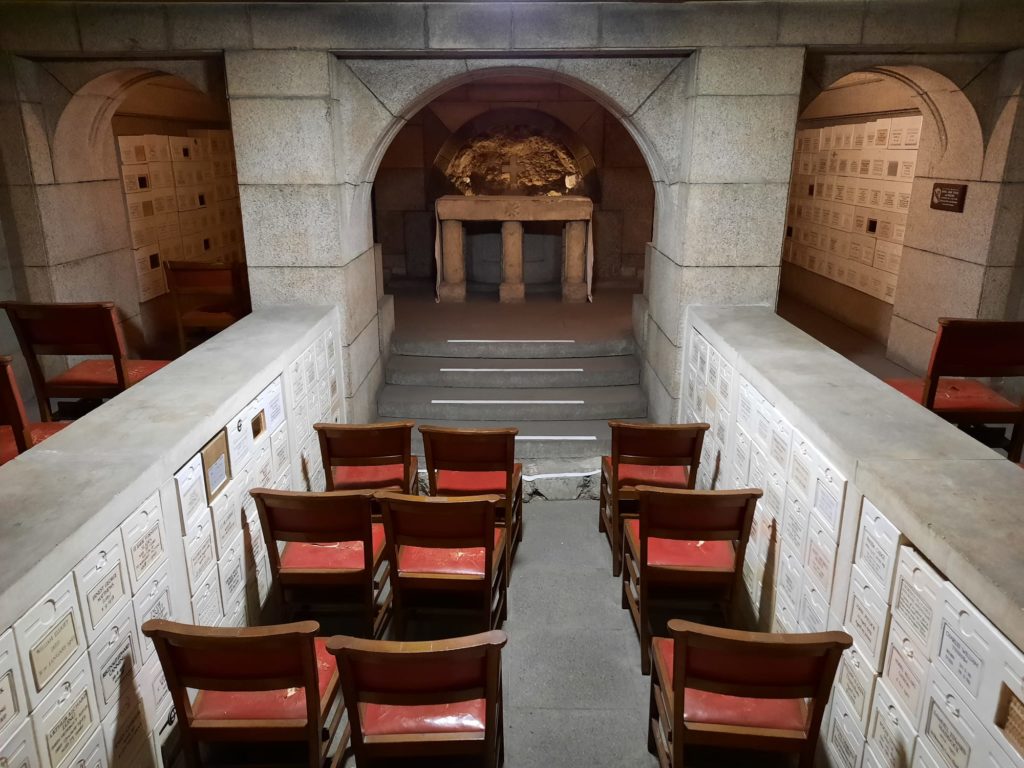
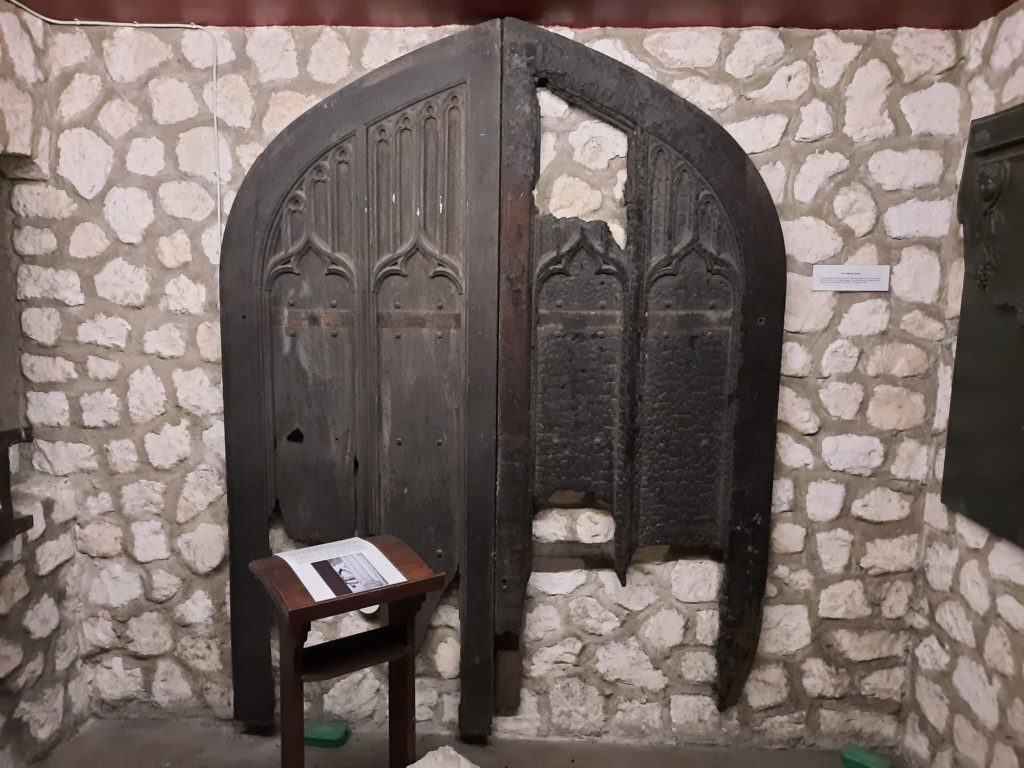
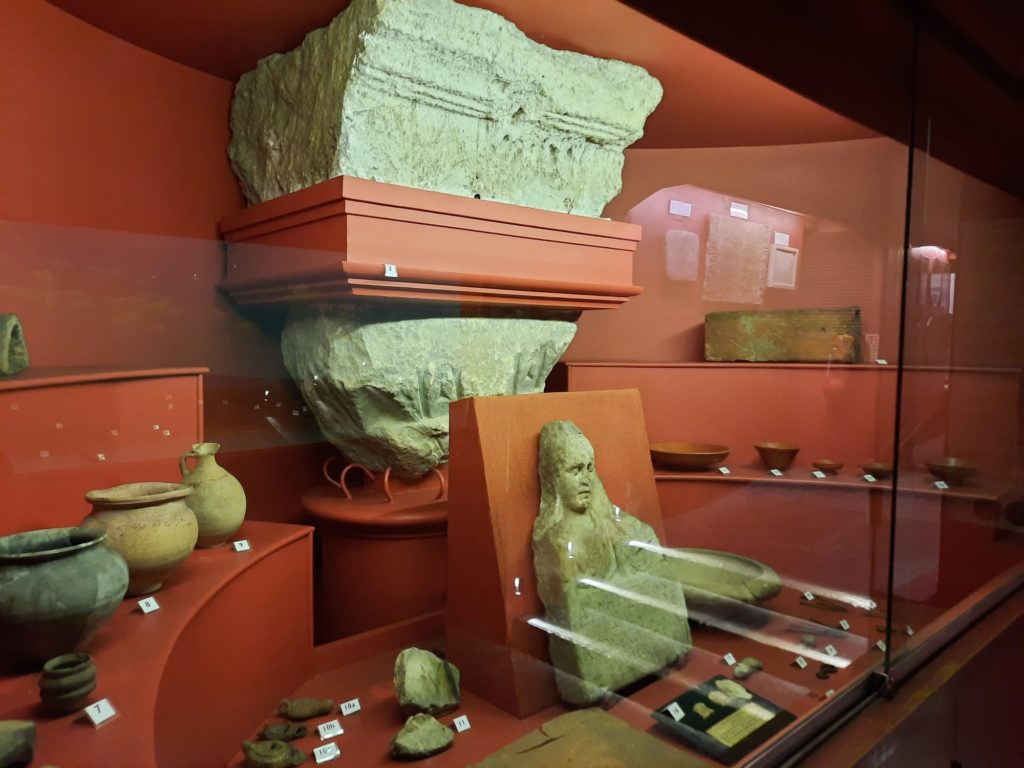
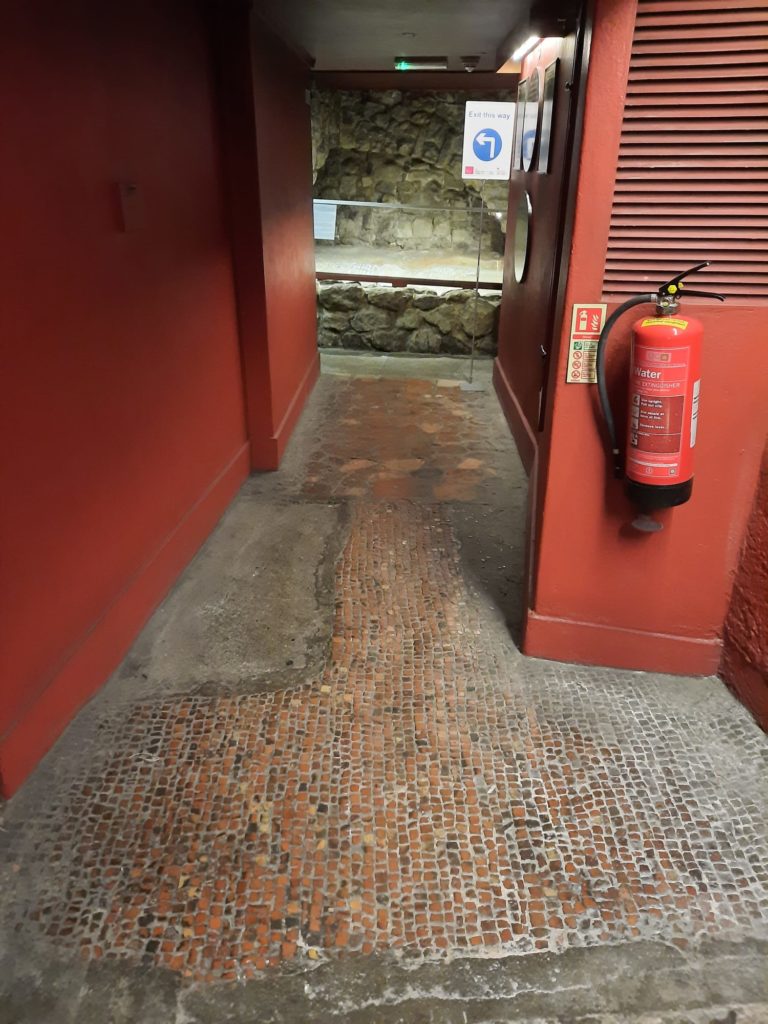
The Museum
Onwards now to the church’s crypt, site of its small museum. The crypt is in fact part of the earlier Saxon church, and contains multiple chapels, either purpose-built or converted burial vaults. The nature of the church itself means that the museum, though small, covers most of London’s history. There are Roman artefacts, Roman and Norman stones, and an altar made from a Crusader castle in one of the chapels. There are drawings of the church over time, and models of Roman London and Toc H in Belgium. An old marriage register is open to the page which shows John Quincy Adams’ marriage in 1797 – the only marriage of a US President on foreign soil.
If I’m honest, the Roman flooring, which for me had been the main draw, was a little underwhelming. We’re not talking mosaics or anything here; this is a plain floor from a plain old building. But it’s still a nice survivor. You can see an image of part of it just above.
The charm of the crypt museum of All Hallows by the Tower is that it’s a historic jumble of objects. It’s a little like a metaphor for the church itself – a reused bit here and there, and lots of history hiding in plain sight. There’s quite a lot of information to read, so set aside half an hour or so to do it properly. And imagine, for a time, the old Londons that exist beneath your feet.
Salterton Arts Review’s rating: 3/5
Trending
If you see this after your page is loaded completely, leafletJS files are missing.

